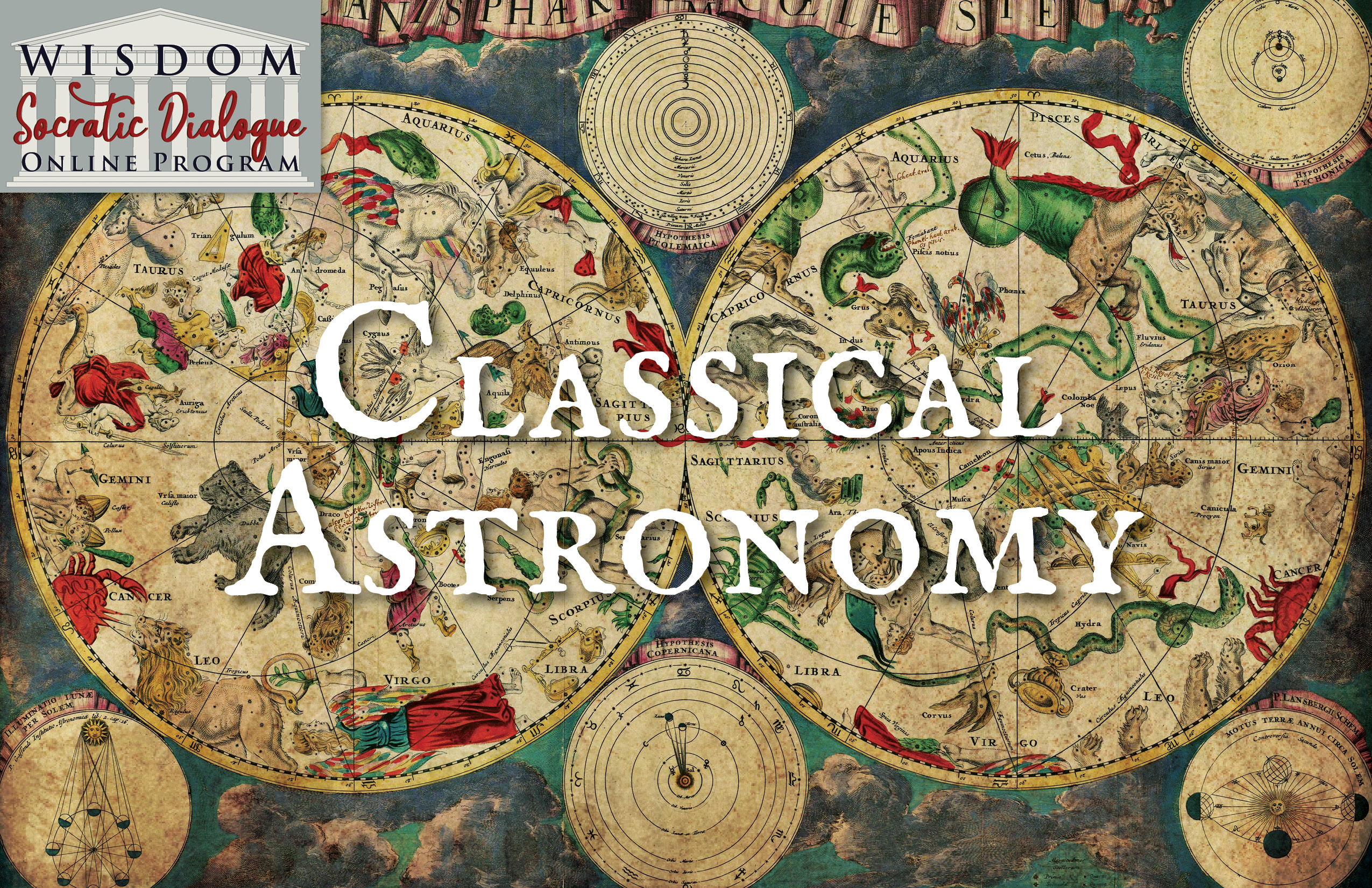
Senior Course (14 yrs and up), $285, 14 week course/class twice weekly - Prerequisite: Foundational Great Books
In this course, students will become acquainted with the basic phenomena of the sun, moon, planets, and stars. Students will see how Ptolemy (2nd cent. A.D.) took naked eye observations and came up with an earth-centered model that explained the motions of the heavenly bodies and allowed predictions of their future locations. After immersing themselves in this geocentric system, students will see why Copernicus's heliocentric model of the cosmos came to replace Ptolemy's, and how the heliocentric system was bolstered by the observations and theories of Kepler, Galileo, and Newton. This investigation of cosmic models will allow students to see the interplay of observation and mathematical theory that is found in many of the scientific disciplines.
Students will make observations of the sun, moon, planets, and stars, especially in the first portion of the semester. The main readings consist of excerpts from Ptolemy's Almagest, Copernicus's On the Revolutions of the Heavenly Spheres, Galileo's Starry Messenger, and Newton's Mathematical Principles of Natural Philosophy. Many of the readings are technical and will be accompanied by reading notes. In preparation for each class, students should expect to spend up to 60-90 minutes on reading and other assignments.
To Buy
- The Almagest: Introduction to the Mathematics of the Heavens by Ptolemy, Claudius. Santa Fe, Green Lion Press, 2021.
(Copies can be found here and here. Please ensure that your purchase matches the above publisher information.)
Reading List: (Online readings will be provided to registered students.)
- The Almagest by Claudius Ptolemy
- On the Revolutions of the Heavenly Spheres by Nicolaus Copernicus
- Starry Messenger by Galileo Galilei
- Mathematical Principles of Natural Philosophy by Isaac Newton
